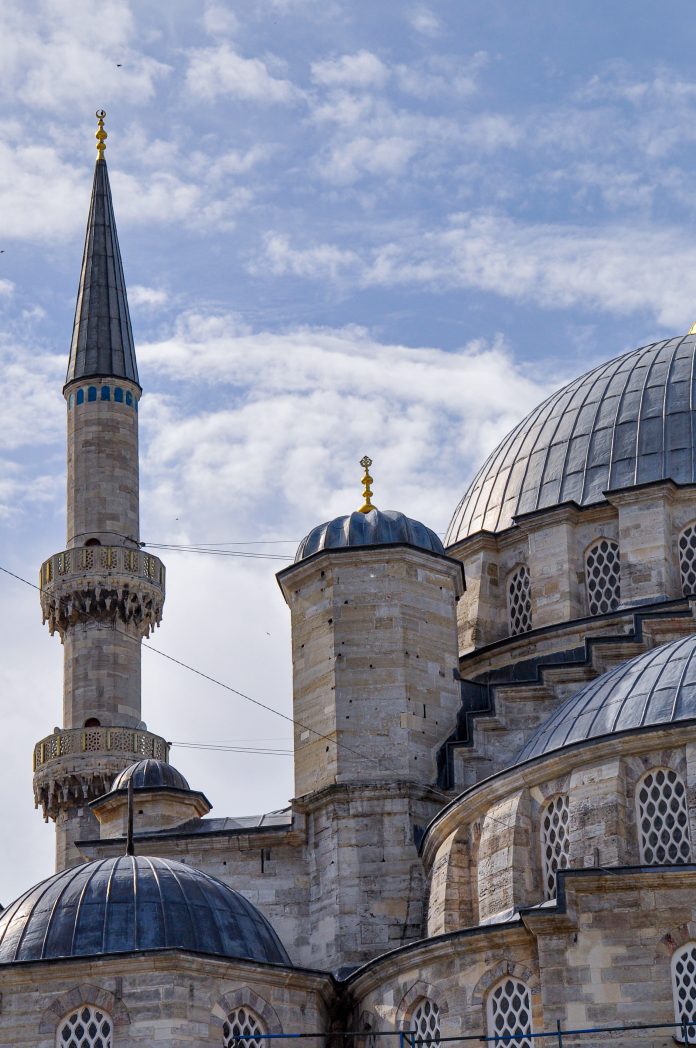Along with Christiaan Zwart of 39 Essex Chambers, Watson Farley & Williams is delighted to have advised the Waqf Trust of Barton (“the Trust”) on its planning strategy for the landmark Brick Veil Mosque, which received planning permission from the Secretary of State for Levelling Up, Housing and Communities (“Secretary of State”) following a six-day ‘call-in’ public inquiry into the mosque’s development in August 2022 during which the proposal raised issues of national policy interest that included the evaluation of planning design standards, the meaning of NPPF(2021) “previously developed land” and the development “brownfield” land in the open countryside.
The mosque will be built on raised grassland at the Broughton interchange in Preston, Lancashire, where the M6, M55 and A6 converge. Its design resulted from an international Royal Institute of British Architects competition that attracted 300 entrants. The winning entry comprises a three-storey elliptical brick drum building and a 30m-high (98ft) minaret reminiscent of a northern mill and able to accommodate up to 248 worshippers.
Notwithstanding 625 letters of support and support from the city’s council, there were also 425 objections to the scheme and these prompted local MP, (who is also a cabinet minister) to request that the decision to grant planning permission be “called-in” to be determined by the Secretary of State on the basis that it was of “more than local importance.” The reasoning behind the local MP’s request remains opaque because , whilst the development attracted some objection , it did not appear controversial nationally and his decision seemed overtly political.
On behalf of the Trust, WFW made an application for judicial review of the decision to call the application in which, while unsuccessful, did yield a number of important documents by way of disclosure. The minister who made the decision to call for the application subsequently resigned prior to Boris Johnson’s stepping down as PM, stating in his letter of resignation (perhaps tellingly):
“Loyalty and unity are traits that I have always endeavoured to provide for our great party. However, I fear I have let these override my judgement recently. “
A six-day public inquiry was held in August last year, where e planning inspector considered all of the complex issues raised by objectors including: whether the development site was brownfield or greenfield; whether the proposal breached the neighbourhood plan and the development plan; the effects of the mosque on the setting of a listed church; whether the harm to the setting was outweighed by any factor; concerns about the potential impact on worshipper traffic; car parking; landscaping and drainage capacity; the capacity of the mosque; and the lack of detail on its final appearance and the potential effects of such on the character and appearance of the area, including the local countryside and nearby Broughton village; and the design of the mosque and its local evaluation. He delivered his report to the Secretary of State in October 2022, recommending approval: as a “brilliant place” in which to worship.
The Secretary of State agreed with the inspector, noting that that any potential harm arising from the development would be outweighed by the public benefits, including the very high-quality design, energy efficiency and renewable energy measures; and the economic benefits derived from the proposed construction.
The WFW London team that represented the Trust was led by Planning and Regulatory Partner Nick Walker, supported by Senior Associate Hetty Tombs. Christiaan Zwart led acted for the Trust at the public inquiry.
“Nick commented: “The decision of the Secretary of State to approve the Brick Veil Mosque project is a huge success for both the Trust and local Muslim residents. Not only does it represent a new landmark for the community but thanks to renewable energy measures that are integral to the building’s design, will in fact provide a net gain in biodiversity.
The call-in decision represented a serious obstacle to the Trust, not just in delay but in significant additional costs too. At WFW we have always had a focus on supporting both communities and the environment which is why we were delighted to use our CSR programme to keep costs to a minimum. Doing so aligned with our sustainability strategy’s focus on People and Planet in both by supporting the local community in Preston and promoting an environmentally friendly place of worship”.
Christiaan added: “This is a stunning result for the whole community, which will result in a magnificent northern gateway into Preston that embodies social cohesion”.
The team supporting the Trust also comprised Alban Cassidy of Cassidy & Ashton, Heritage Conservation Consultant (HESPR – IHBC) Melanie Lloyd Morris, Timothy Russel of Eddisons, Jonathan Carter of Rolfe Judd Architecture and Stuart Ryder of Ryder Landscape Consultants Ltd.


paxlovid price: Paxlovid over the counter – paxlovid generic